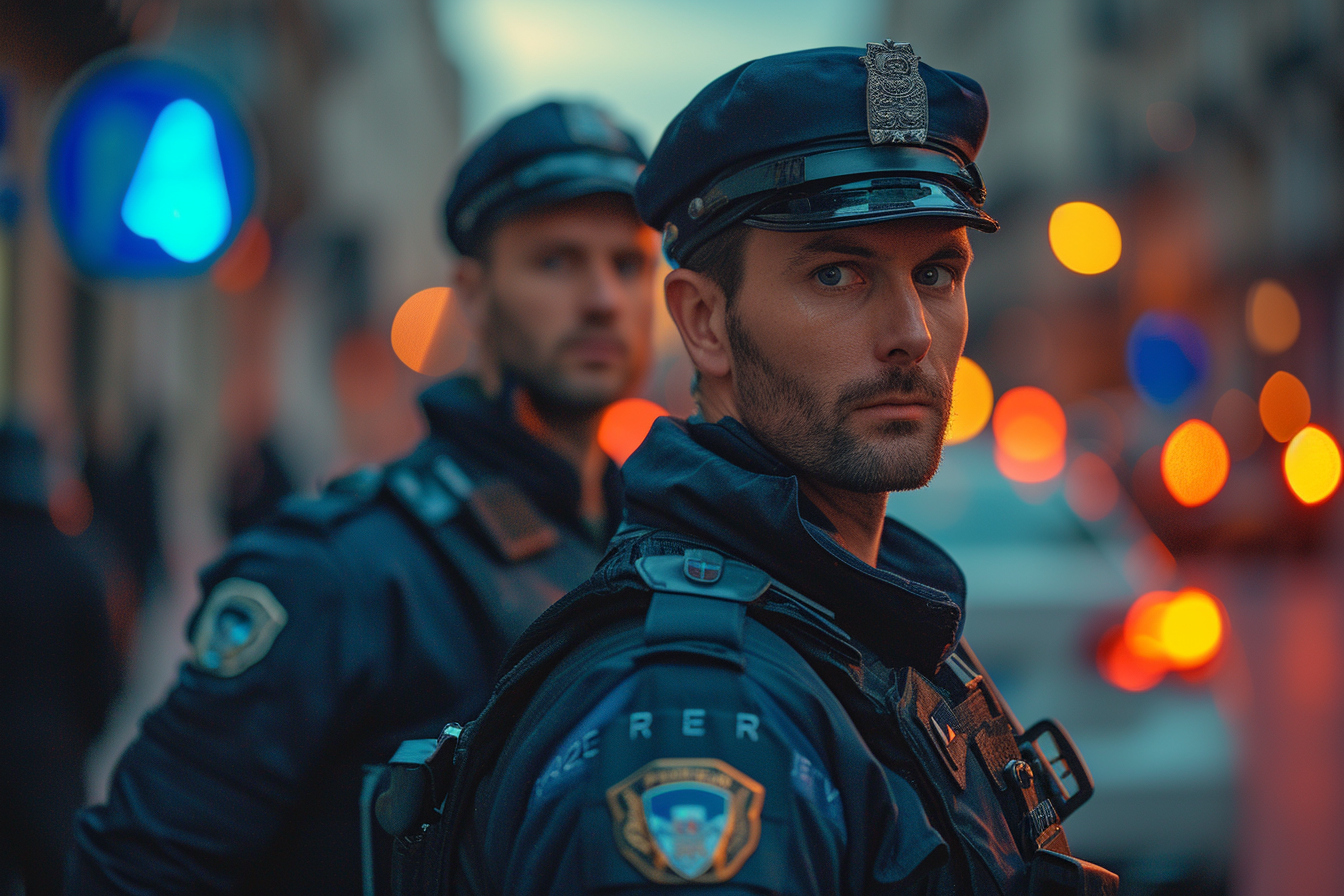The gendarmerie is a force that relies on the cohesion of its members to carry out its missions. One of the most striking images of this force is undoubtedly that of the gendarmes moving in a synchronized manner during patrols and interventions. This physical rapprochement is not accidental, it meets specific operational requirements which guarantee the safety of the gendarmes and the success of their missions.
Proximity on patrol: when the gendarmes operate on patrol, staying close to each other allows for better coordination. This physical proximity facilitates communication, often reduced to gestures or whispers, so as not to attract attention or reveal one’s presence during surveillance, for example.
Security through proximity
The safety of police officers is a constant concern. By being close to each other, they can react quickly and concertedly to a threat. Mutual support is a crucial asset when facing unpredictable situations.
Reaction and adaptation: the success of an intervention often requires knowing how to adapt quickly to a changing environment or situation. Police officers must be able to perceive the warning signs of a possible escalation of violence or danger, and proximity allows immediate and effective coordination.
The importance of nonverbal communication

In intervention, speaking is not always a viable option. Noise can alert, and sometimes silence is the best ally. Police officers are therefore trained to communicate using non-verbal signals.
Signs and gestures: a look or a movement of the hand can be enough to transmit a crucial message between partners. These codified gestures are the backbone of communications in hostile or tense environments.
The psychological factor of proximity
Physical proximity in the ranks of the gendarmerie is not limited to practical considerations. The psychological support represented by the presence of a comrade is undeniable in professions where risk is part of daily life.
Solidarity and morale: in moments of tension, knowing that you can count on your colleague has a positive impact on morale. This solidarity contributes to better stress management in intervention situations.
Training and training
A gendarme does not instinctively adopt this type of behavior. Training plays an essential role in shaping the reflexes necessary for effective patrol or intervention.
Exercises and repetitions: through repeated exercises, the gendarmes learn to move and act as one man. These training sessions aim to anchor the good practices and reflexes which will make it possible to maintain this proximity which is so characteristic in a real situation.
Intervention strategies
Each intervention situation is unique, but the principle of sticking together cannot be denied, because it is at the heart of the strategies deployed by the gendarmerie.
Tactical training: the use of training allows optimal management of space and scope of action. By remaining close, the gendarmes can evolve while maintaining a formation that offers maximum collective defense while allowing them to react to any potential threat.
Equipment, extension of the pair
The equipment worn by the gendarmes is designed to be used as a team. Even the wearing and use of special equipment is conditioned by the need to maintain a certain proximity.
Complementarity of equipment: the distribution of complementary roles and equipment within a patrol reinforces the need to remain close to ensure their effective joint use if necessary.
Inter-service coordination
The gendarmes sometimes have to act in concert with other security or emergency services. Proximity facilitates this inter-service coordination, essential for the success of joint operations.
Interactions and joins: by remaining close, the gendarmes can ensure better interaction with other units such as the police, firefighters or even medical teams, thus harmonizing efforts for better crisis management.
The impact on public perception
The vision of united and organized gendarmes also has a deterrent effect. A coherent and coordinated group reinforces the idea of an effective force ready to intervene.
Authority and trust: the population perceives this tight coordination as the reflection of a competent and reassuring authority. The visible and organized presence of the police helps to reinforce a feeling of security among the public.
Prospects for the evolution of practices
Adaptability is a key characteristic of any security force. If the foundations of police patrols and interventions remain, the methods and tactics will always be subject to evolution to best respond to the challenges of the future.
New technologies and approaches: the incorporation of new technologies and advanced methodologies could change the way in which gendarmes interact on patrol or during interventions. It remains to be seen how these innovations will shape behavior and the way in which the gendarmes will approach the question of proximity in the future.
The behavior of gendarmes on patrol and in intervention is therefore the result of a complex alchemy between operational necessity, collective security, effective communication and psychological support. These elements, sprinkled with tireless practice and in-depth training, shape this reflex of staying “glued together”, thus ensuring the protection of the gendarmes and the population. Citizens can thus observe, on a daily basis, the reassuring silhouette of these security professionals, united in their mission of protection and public service.












